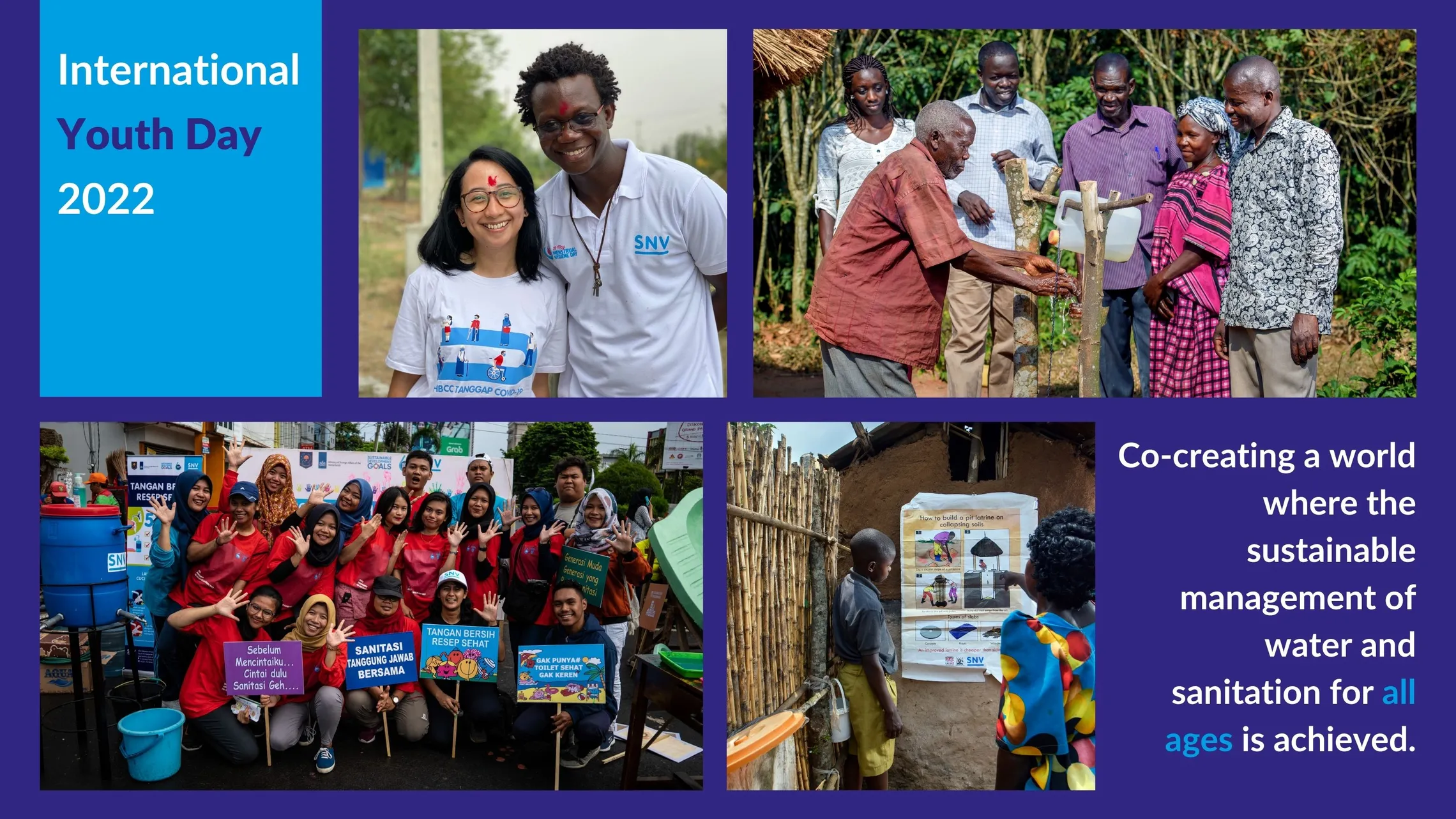Overcoming ageism in sanitation development

Ageism is one of several obstacles that leads to policy and infrastructure failures. In this Q&A, our colleagues in Burkina Faso and Indonesia reflect on the importance for people of all ages to work together in sanitation and hygiene programming. They encourage us to go beyond the rhetoric of celebrating intergenerational solidarity and demonstrate how this is being done in SNV’s rural and urban sanitation programmes.
In both countries, enriching sanitation and hygiene programming with intergenerational perspectives is part of SNV’s commitment to approaching development through the lens of Gender Equality and Social Inclusion (GESI).
Q1: How does your project ensure that the sanitation and hygiene needs of all ages are considered in the design of sanitation and hygiene programming?
Saniya (Indonesia): In SNV’s rural and urban sanitation programming – including Indonesia – it is the norm to start projects by investigating group (including age)-specific (i) barriers to sanitation and hygiene through formative research and GESI studies, and (ii) representation and engagement in WASH programming though baseline surveys. These findings are then used to shape our responses. To illustrate, in our more recent programmes, we introduced financing options for the installation of disability-friendly toilets (a shared need of older household members), engaged older members to participate in behaviour change communication activities (to ease feelings of disconnect and fear of information technologies), and organised various skills training on latrine and septic tank construction, liquid soap production, and business model development for young people, women’s groups and cooperatives (to expand their livelihood opportunities).
Cesaire (Burkina Faso): In the context of areas supported by SNV’s Eau Cle de Development Durable (ECDD) project, our studies found that women across different ages were excluded from commune-level decision-making. This exclusion contributed to the design of sanitation and hygiene responses that hardly took account of potty-training children 0-5 years of age during defecation, menstrual health and hygiene (MHH) education for girls at home and in schools, and the needs of older members in facility design. To help redress this, we introduced a project impact indicator to increase the percentage of women – across different social strata – in WASH management bodies. To improve MHH, we tailored awareness raising initiatives for young people and adults. Prior to project implementation, all ten ECDD-supported schools did not teach MHH, did not have proper toilet facilities, and considered menstruation a private and shameful matter leading to high school-girl absenteeism and considerable risk of hygiene-related infection.

Intergenerational collaboration for change (Blog contributors on upper left)
Q2: What were the barriers and constraints faced by your respective projects in making intergenerational collaboration a reality?
Cesaire: Matters of MHH are considered private and a taboo when discussed in the public sphere. These ideas are linked to hardened traditions and beliefs passed down from generation to generation. Our facilitation teams did not only meet resistance during workshops, but they were also threatened for ‘putting [Western] ideals into the heads of young girls and women.’ Peer-to-peer approaches such as working with intergenerational champions within a community and facilitating inter-community experience sharing helped ease community members into new ways of thinking. We did not force our views on communities and respected some local customs in promoting good sanitation. In some households, older male heads did not want to share a toilet with female members. Whilst the reasons were not noticeably clear to us, we took the strategy to sensitise these households in the construction of two toilets.
Saniya: Whilst we have many examples of intergenerational collaboration, I believe that we have yet to fully maximise its potential to accelerate change. For instance, older members of societies prefer face-to-face sanitation socialisation efforts, while young promotors use social media channels. In advocacy, older and more senior advocates employ classical methods of influencing, while young advocates rely on media engagement. Over the years, our programmes have been advocating and assisting local governments – in their capacity as duty bearers of human rights – to facilitate intergenerational collaboration and the coming together of actions regardless of preferred methods. For example, the expertise of older and more senior advocates is primarily tapped for face-to-face socialisation and services promotion, while younger people’s capacity for disability inclusion – in WASH and digital media promotion – is being harnessed to prevent exclusion.

Older women partners of SNV in Indonesia participate in an SLTH sanitation video

MHH awareness raising in Burkina Faso by ECDD colleagues
Q3: Any final remarks to share about intergenerational collaboration?
Saniya: Development by many rather than a few casts a wider net to leave no-one behind. It is imperative for government to take a leadership role in creating the necessary spaces for people of different ages to participate in, ensuring that their voices are heard, and facilitating the translation of collectively agreed perspectives to policy, enforcement procedures, and/or investments.
Cesaire: Whilst national government is on the lead, decisions must be taken at the ‘lowest’ governance levels with full consultation and the involvement of communities and users of – in this case – WASH services of all ages. A follow-the-leader model is strong within communities, and it is often the case that solidarity is at its strongest within communities; ingredients that could help boost area-wide access to sustainable WASH services.
About the Contributors
[1] Saniya Niska is SNV in Indonesia's GESI and WASH Advisor who led programme implementation of the successful FCDO-Unilever COVID-19 sanitation and hygiene collaboration, HBCC.
[2] Cesaire Gouem is a WASH Advisor in SNV in Burkina Faso and a member of the ECDD team - an SNV-World Waternet programme on water and sanitation, and integrated water resources management.